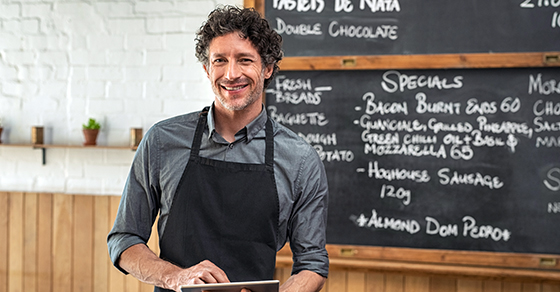The Small Business Administration (SBA) has launched the Restaurant Revitalization Fund (RRF). It was established under the American Rescue Plan Act (ARPA) signed into law in March and went live for applications on May 3rd.
The SBA is strongly urging interested, eligible businesses to apply as soon as possible.

Who’s eligible?
Funds are available for restaurants, of course, but also many other similar types of businesses. Food stands, trucks and carts can apply, as well as bars, saloons, lounges and taverns. Catering companies may also file an RRF application.
In addition, the program is available to snack and nonalcoholic beverage bars, as well as “licensed facilities or premises of a beverage alcohol producer where the public may taste, sample, or purchase products,” according to the SBA.
For some restaurant-like businesses, on-site sales to the public must comprise at least 33% of gross receipts. These include bakeries; inns; wineries and distilleries; breweries and/or microbreweries; and brewpubs, tasting rooms and taprooms.
How much funding is available?
Under the ARPA, the RRF received a total of $28.6 billion in direct relief funds for restaurants and other similar establishments that have suffered economic hardship and substantial operational losses because of the COVID-19 pandemic.
The dollar amount an eligible business can receive under the RRF will equal its decrease in gross revenues during 2020 compared to gross revenues in 2019 — less the amount of any Paycheck Protection Program (PPP) loans received. Other amounts must be excluded from 2020 gross receipts as well, including:
- SBA Section 1112 debt relief,
- SBA Economic Injury Disaster Loans,
- SBA advances (targeted and otherwise), and
- Local small business grants.
Overall, the RFF may provide a qualifying establishment with funding equal to its pandemic-related revenue loss up to $10 million per business and not more than $5 million per physical location. Recipients must use funds for allowable expenses by March 11, 2023.
What will we need to apply?
A timely, properly completed application is critical to acquiring this funding. An applicant business must submit documentation of its 2020 and 2019 gross receipts, as well as at least one of the following:
- A federal tax return,
- A point of sale report, or
- Externally or internally prepared financial statements.
Warning: Internally prepared financials could significantly delay SBA review of your application.
You’ll also need to disclose the amount of any PPP loans you’ve received. However, the SBA’s online application system should provide this information automatically.
Get started now
To get started, register for an account at restaurants.sba.gov. The SBA advises applicants to first download a sample version of the application here. Rudler, PSC can help you identify necessary documentation and navigate the process. Contact your Rudler, PSC advisor at 859-331-1717.
RUDLER, PSC CPAs and Business Advisors
This week's Rudler Review is presented by Maria Graell, Staff Accountant and Matthew Topmiller, CPA.
If you would like to discuss your particular situation, contact Maria or Matt at 859-331-1717.


As part of Rudler, PSC's commitment to true proactive client partnerships, we have encouraged our professionals to specialize in their areas of interest, providing clients with specialized knowledge and strategic relationships. Be sure to receive future Rudler Reviews for advice from our experts, sign up today !